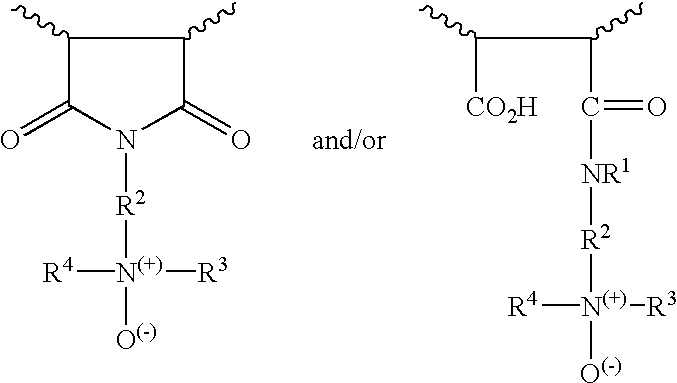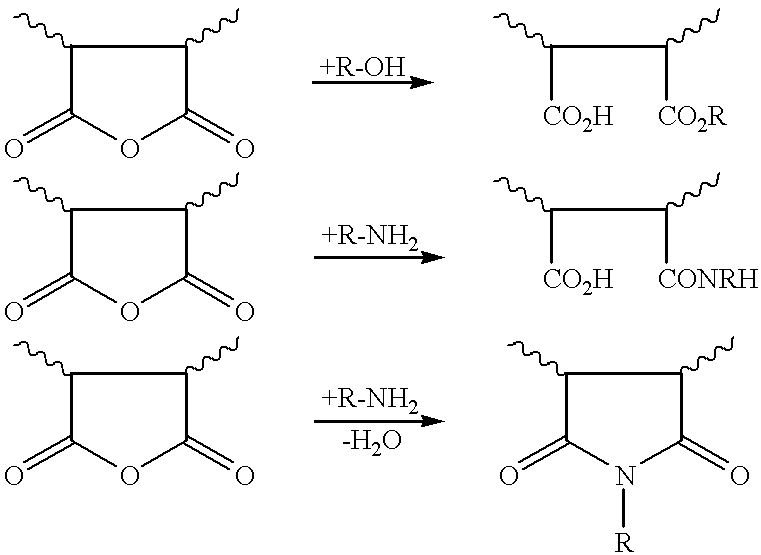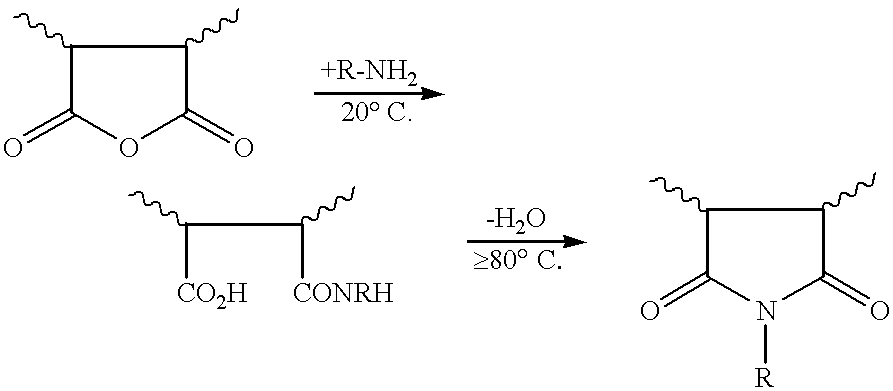Maleic anhydride copolymers containing amine oxide groups and their use as dispersants for pigments of fillers
a technology of amine oxide group and copolymer, which is applied in the direction of pigment treatment with macromolecular organic compounds, transportation and packaging, coatings, etc., can solve the problems of color products, increase in molecular weight, and polymer production, and achieve good performance properties and easy preparation
- Summary
- Abstract
- Description
- Claims
- Application Information
AI Technical Summary
Benefits of technology
Problems solved by technology
Method used
Image
Examples
use examples
Aqueous pigment pastes were prepared using from 0.1 to 100% by weight of the maleic anhydride copolymers of the invention, preferably from 0.5 to 50% by weight (based on the weight of the pigments). The copolymers of the invention were either mixed beforehand with the pigments to be dispersed or dissolved directly in the dispersion medium (water with possible additions of glycol ether) prior to or simultaneously with the addition of the pigments and any other solids.
Aqueous, highly concentrated, pumpable and flowable pigment preparations were prepared in a simple manner by mixing the polymer to be used, alone or in combination with at least one further component, with water, scattering the pigment into this mixture, with stirring, and dispersing the mixture until a suspension of the desired fineness and consistency is obtained.
A further method of preparing the pigment preparations was first to carry out dry mixing of a pigment with the copolymers of the invention to give a pulverule...
PUM
| Property | Measurement | Unit |
|---|---|---|
| mol % | aaaaa | aaaaa |
| thickness | aaaaa | aaaaa |
| molar ratio | aaaaa | aaaaa |
Abstract
Description
Claims
Application Information
 Login to View More
Login to View More - Generate Ideas
- Intellectual Property
- Life Sciences
- Materials
- Tech Scout
- Unparalleled Data Quality
- Higher Quality Content
- 60% Fewer Hallucinations
Browse by: Latest US Patents, China's latest patents, Technical Efficacy Thesaurus, Application Domain, Technology Topic, Popular Technical Reports.
© 2025 PatSnap. All rights reserved.Legal|Privacy policy|Modern Slavery Act Transparency Statement|Sitemap|About US| Contact US: help@patsnap.com



